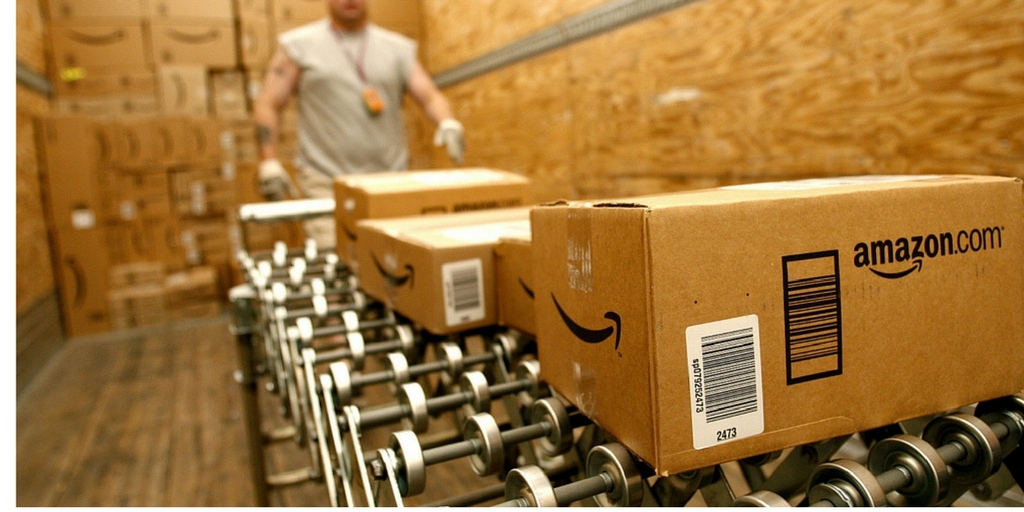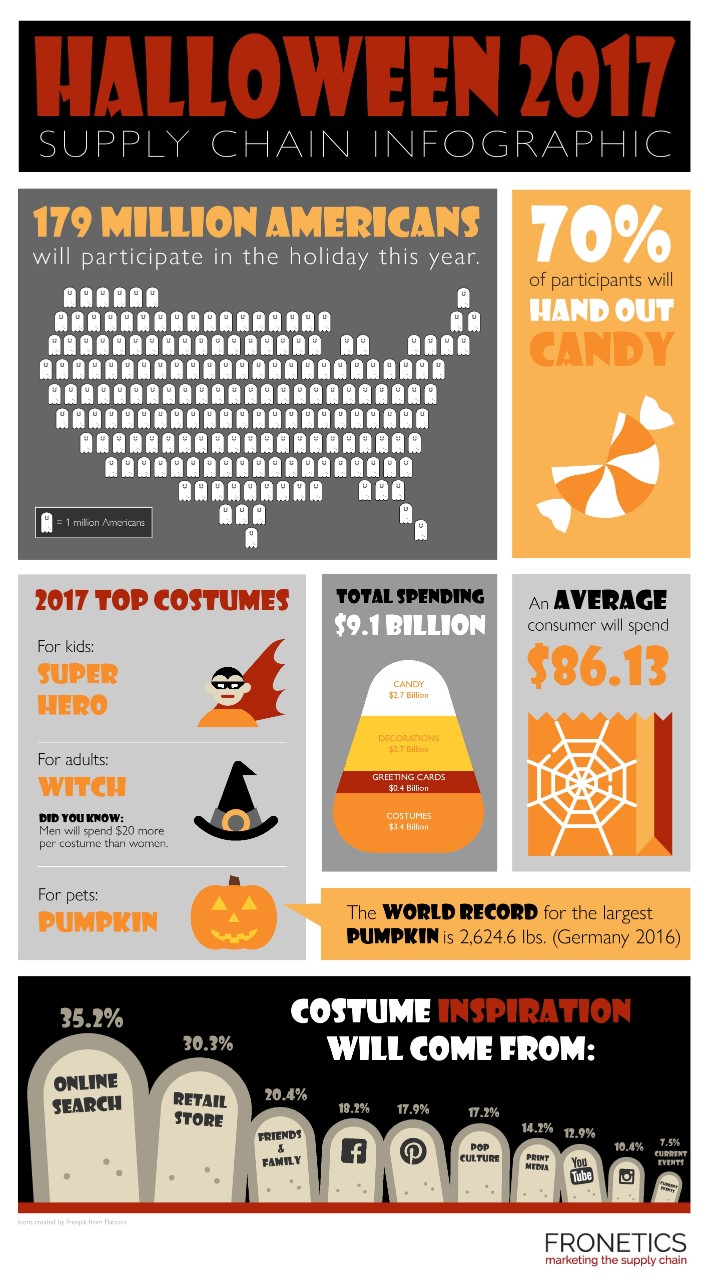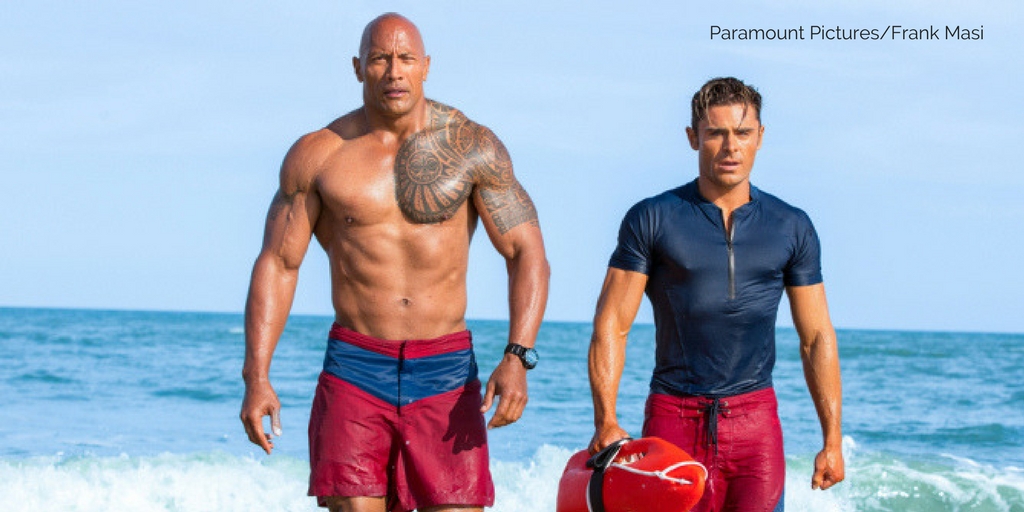
by Fronetics | Oct 25, 2017 | Blog, Content Marketing, Current Events, Marketing, Social Media
Also in October’s 2017 social media news: Vimeo is getting in the live streaming game, Instagram doubles its ad dollars, and YouTube will be taking over America’s favorite past time.
While the fall season has many of us wrapped up in blankets with flavored lattes, social media sites are spicing things up in lots of other ways.
Shopping for the holidays just got easier thanks to Instagram. YouTube is taking over Major League Baseball. Twitter is making those Throwback Thursdays way more convenient. And Facebook wants us all to know you can’t judge a book by its cover.
Instagram Expands Shopping Capabilities on the App
Instagram is teaming with Shopify to create the capability for brands and retailers to sell products directly from their Instagram accounts. Shoppers will be able to click on the experimental tagging links and purchase products directly through the app. Instagram is working overtime to have 500,000 retailers available for the upcoming holiday season, including Black Friday and Cyber Monday. “Discovery is at the heart of the Instagram experience. Together with Shopify, we are enabling new ways to turn discovery into exploration, allowing Instagrammers to find new things from brands they love and businesses to find opportunities to build relationships with these valuable customers,” Instagram said.
YouTube Named Presenting Sponsor of the World Series
YouTube is working overtime to promote its live TV service by becoming the presenting sponsor of the MLB World Series. Kelly Merryman, YouTube’s managing director of content partnerships in America, said in a statement that the deal serves to underscore the kinds of popular sporting events that are available on YouTube TV. The multi-tiered deal serves as the first national ad campaign for the video platform and will include national TV ads, on-air mentions during each game, in-stadium branding, and more.
LinkedIn Tests Geofilters for Events and Conferences
LinkedIn is testing the ability for users to tag events and conferences with location-based filters, taking a page from Snapchat. As part of the platform’s new native video tools, LinkedIn is giving conference attendees the opportunity to add dedicated event frames to the videos they create while attending such functions. The illustrations are styled like conference badges, with the user’s profile photo in the right-hand corner. The badges also indicate the user’s role (such as a speaker, panel member, or attendee).
Facebook Tests Publisher-Information Button on Articles
Facebook is experimenting with adding a publisher-information button to articles shared in your News Feed that will provide additional information about the author and context around the article without having to navigate away from the site. The test was born out of feedback from the Facebook Journalism Project, which the ‘Book launched to ensure the credibility of content shared by its users . By creating transparency around publishers and their content, Facebook says its helping users to make more informed decisions. “Helping people access this important contextual information can help them evaluate if articles are from a publisher they trust, and if the story itself is credible,” wrote Facebook.
Twitter Adding a Bookmarking Tool
Twitter has announced its plan to add a new bookmarking tool to its app. The “Save for Later” tool will allow users to save a tweet to read later on. The feature’s impending launch was first unveiled on Twitter itself, naturally, when Head of Product Keith Coleman announced that a new way to save tweets was in the works as a result of a company HackWeek project dubbed #SaveForLater.
Vimeo Launches Live Streaming Platform
After acquiring Lifestream, Vimeo is launching its own live-streaming platform called Vimeo Live. The new platform will allow users the ability to create, edit and distribute live events. The paid membership is promoting better viewer engagement, speedy support, and in-depth analytics to track your progress.
Instagram Grows by 100 Million Users in Four Months and Doubles Advertisers
Instagram is having a pretty good year. It has reached over 800 million monthly users, with 500 million daily active users. This is a 100-million-user increase since April. And the platform’s growth doesn’t stop there. Instagram also reported it has 2 million advertisers. “Time spent watching video on Instagram is up more than 80% year over year, while the number of videos produced per day has increased by 4x from last year. With the emergence of innovative mobile video formats, like Instagram Stories, business are finding more opportunities to connect with their audiences, whether on the go or in the moment,” wrote the Instagram Business Team on its Business Blog.
YouTube Debuts New Ad Tech Tools for Brands
YouTube is making it easier for advertisers to get in front of their target audiences. Marketers can now reach potential customers based on their searches and the videos they’re already watching with four new ad tech tools:
- Video Ad Sequencing, which allows advertisers to create a video funnel that moves users through a planned sequence of video ads;
- Director Mix, which automatically customizes video content for different audiences;
- Custom Affinity Audiences which allows advertisers to define audience targeting based on users’ YouTube searches;
- Neilsen’s Matched Panel Analysis, which allows advertisers to measure the impact of video alongside other Google campaigns on offline sales.
The video site is hoping to make it easier to create a relationship between what advertisers have to offer and the people that are interested in those offers.
Related posts:


by Fronetics | Oct 24, 2017 | Blog, Current Events, Logistics, Strategy, Supply Chain
Cities should consider Amazon’s HQ2 search criteria as a roadmap for attracting innovative companies, empowering residents, and driving a healthy local economy.
We’re living through a seismic shift in the way business transactions are being conducted. E-commerce is now king. We might be tempted to think the decline of retail equates to business transactions being moved from physical space to a digital world. Will our cities and the shops that line their streets become obsolete in the face of e-commerce?
Amy Liu and Mark Muro of the Brooking Institute’s Metropolitan Policy Program contend that if Amazon’s recent search for a second headquarters (“HQ2”) has anything to show us, it’s that America’s cities still have an important role to play in the future of e-commerce.
How cities could change
Liu and Muro suggest cities take a close look at Amazon’s selection criteria for HQ2’s location and extrapolate the best ways to “build up the fundamental assets prized by innovative firms and industries.” In this way, cities can best “garner a bigger share of high-tech growth,” and furthermore, be a part of our nation’s gaining “a competitive foothold in the digital future.”
Liu and Muro draw four main takeaways from Amazon’s city selection criteria:
- Capacity to produce skilled, technical talent
- Access to domestic and global markets through modern infrastructure
- Connected and sustainable placemaking
- Culture and diversity
Cities that boast these characteristics will have the best chance at attracting the kind of companies that will shape the future of how we do business — e-commerce and beyond. These companies will employ and empower local talent. And not just highly skilled talent. I can’t help but think of this recent Wall Street Journal article about the impact that Amazon’s presence has had on Fall River, Massachusetts.
Such employment opportunities will attract new residents. New residents will boost the local economy. Strong local economies boost the health and well-being of the community. And the positive benefits snowball from there.
I’m speaking in generalizations here, but cities stand to gain quite a bit from considering Amazon’s HQ2 search criteria. Of course, there are plenty of negatives to making way for the Amazons of the world — the decline of Main Street being one of them. But if the digital world plays an increasingly important role in the ways we conduct business and commerce, isn’t there value in strategizing around it?
Related posts:


by Fronetics | Oct 23, 2017 | Blog, Current Events, Supply Chain
Consumers will spend a record $9.1 billion during Halloween 2017.
U.S. consumers will take to the retail markets Halloween 2017 and spend a whopping $9.1 billion on Halloween costumes, decorations, candy and more, making it the largest spending for the spooky holiday to date.
The National Retail Federation reports that consumers are preparing to be the baddest witches on the block, spending almost a billion more dollars this year on supplies than in 2016 ($8.4 billion). And the men are really stepping up their game, spending on average $20 more per costume than women.
“Americans are planning to spend more than ever as they gear up for Halloween,” NRF President and CEO Matthew Shay said. “Retailers are helping customers celebrate in style with a huge selection of costumes, candy and decorations to cater to ghosts and goblins of all ages.”
From 2017 blockbuster hits like Wonder Woman and Spiderman, it’s no wonder the most popular costumes for kids are superheroes. And let’s not forget about Fido — the most popular costume for pets for Halloween 2017 is a pumpkin.
Still need inspiration for the boo bash you’re attending? Try heading over to Instagram, a source of inspiration growing 12% year-over-year. Other consumers will get ideas from online search (35.2%), a retail store (30.3%), Facebook (18.2%), Pinterest (17.9%), and pop culture (17.2%).
Need more fun facts about Halloween to get you into the scary spirit? Check out this year’s infographic from the NRF’s survey.
Halloween 2017 supply chain infographic

(Made with Canva)
Have a safe and happy Halloween 2017, everyone!
Related posts:


by Fronetics | Oct 11, 2017 | Blog, Content Marketing, Current Events, Marketing
As peer recommendation becomes increasingly important to B2B buying decisions, user review sites can make or break a business.
How often do you consider going to a much-hyped summer movie but change your mind when a friend shares the terrible Rotten Tomatoes reviews? According to Quartz Media, many a summer movie has proven more “bust” than “blockbuster” after negative feedback on the movie review site.
Just as Rotten Tomatoes can sink a would-be summer blockbuster, user-review websites can have a toxic effect on your business.
B2B buyers are increasingly relying on peer recommendations in the purchase process. In fact, 67% of those surveyed in Demand Gen’s 2017 B2B Buyers Survey reported that peer reviews are an important part of evaluating a list of solution providers.
Third-party user review sites as peer recommendations
Third-party user review sites function like peer reviews, particularly in the B2B space, where a buyer can’t always get a good vendor recommendation at a neighborhood dinner party. They need industry peers that have experience with these vendors to provide honest feedback.
So when someone leaves positive feedback about your business on one of these third-party sites, it’s a huge win for you. Potential buyers will see your customer’s kind words and form a positive association with your brand name. It can be the difference in winning a new customer’s business.
Dealing with negative user reviews
While your business will benefit greatly from positive reviews, it’s important to acknowledge that not all reviews will be favorable. You need a strategy for dealing with negative reviews. Here are a few tips:
1) Ignoring a bad review won’t make it go away.
Take the time to respond to criticism online, publicly if possible. Acknowledge the concerns of the reviewer, offer solutions, and invite them to contact you directly to resolve the issue. Negative reviews don’t have to be disaster — they can even be an opportunity for growth.
2) Learn from your mistakes.
This one may seem obvious, but you’d be surprised how often business don’t take negative reviews seriously, only to make the same damaging mistakes over and over again. If the reviewer has a valid concern about your product or service, take the time to address it internally.
3) Encourage more reviews.
Reviews are a way to empower your customers, and they represent vast opportunities for your business. Seek them out!
Related posts:

by Elizabeth Hines | Oct 10, 2017 | Blog, Consumer Electronics, Current Events, Manufacturing & Distribution, Strategy, Supply Chain
Of legal obligation, financial incentives, and convenience, what best drives consumers to practice proper e-waste recycling?
The United States is a nation of consumers, and there are few things we enjoy more than our electronic gadgets. Unfortunately, for every new device — or upgrade — introduced to the market, there’s an older model that becomes obsolete.
The world produced 41.8 million metric tons of e-waste in 2014, according to a study published by the United Nations University. So how can we combat this growing problem?
The recycling option… and sometimes law
Recycling products that we’re no longer using is always good practice. It can help protect the environment from hazards that are in our electronics and batteries. And many times, the device can be refurbished and donated to a person in need.
Sometimes just asking people to recycle isn’t enough, though. Some governments have made it illegal not to recycle. For example, the EU has gone so far as to institute the Battery Directive. Understanding that batteries commonly contain elements such as mercury, cadmium, and lead, the EU has set an objective of improving environmental performances of batteries, and setting a standard for their waste management as well.
In the United States, cities like New York City have made it illegal to simply throw out electronic devices. Instead, residents need to bring their devices to a recycling center, many of them conveniently located at other electronic retail outlets.
Incentives
If less hazardous waste in landfills, a cleaner environment, and compliance with laws and regulations aren’t enough, how about saving money as an incentive to recycle e-waste?
Many manufacturers and retailers offer discounts on purchases with the return of old devices. Best Buy, for example, has experimented with trade-in and recycling programs that offer gift cards or cash for customers who bring in old devices. As programs like this can leave the retailer struggling to break even, they often aren’t financially attractive enough to be the sole incentive drawing consumers to recycle e-waste.
But one incentive that is very effective is also, probably, the most obvious — convenience. One survey found that 43% of respondents would be more likely to recycle e-waste were cell phone and battery recycling part of curb-side pickup.
The convenience of curb-side pickup for paper, plastic, and aluminum helped to make recycling ubiquitous in neighborhoods across the country. It’s the same thought process that leads researchers to believe that the convenience of a curb-side pickup will encourage more individuals to recycle their electronic devices and batteries.
This post originally appeared on EBN Online.
Related posts:

by Fronetics | Sep 28, 2017 | Blog, Current Events, Strategy, Supply Chain
Terrorism is a reality that, unfortunately, requires our growing attention in the supply chain world.
The British Standards Institution Supply Chain Services and Solutions publishes an annual report that analyzes global trouble spots for supply chain operations. This year’s report focused on the continual rise in terrorist attacks and how it will continue to affect the supply chain.
In 2016, there were 346 attacks in just one year — that’s an 8.5% rise on the previous year, averaging 6.7 attacks every week.
Terrorism, in its broadest sense, describes the use of intentionally indiscriminate violence as a means to create terror or fear to achieve a political, religious, or ideological aim. This violence can take on many forms, including cyberterrorism, and can have dire consequences to the supply chain.
“The direct impact from acts of terrorism and the indirect effects from terrorist organizations’ exploitation of the supply chain have been, and will continue to be, critically felt across Europe,” said David Fairnie, principal consultant in supply chain security at BSI.
In 2016, supply chain terrorism attacks were more widely distributed than in any previous year, with 38% more countries suffering attacks. The top 10 countries for supply-chain-terrorism incidents accounted for $664 billion worth of global exports. That includes $96 billion of exports to the United States. Clearly, a significant volume of international trade is at risk for disruption by terrorist groups.
I recently spoke with Randy Russell of the Russell Group, an agricultural lobbying firm that works with farmers and manufacturers from the supply chain, to ask about his thoughts on terrorism and the impact it can have on the supply chain, especially related to our food and water supplies.
“Terrorism is a global problem that strikes locally. The net result of the horrible tragedy of 9/11 was a wake-up call to all Americans about the threat of terrorists groups. We have invested billions in intelligence and homeland security to ensure that a large-scale attack doesn’t affect two major areas in the U.S., our water supply and an outbreak amongst our food supply, especially our cattle industry.
“No country is completely safe, but we are exponentially better prepared to stop such attempts because of a well-coordinated effort. Remember at the heart of of terrorism is the hatred of democracy and the freedoms it is built upon. Their whole approach is to create fear and doubt within the boundaries of those who embrace freedom.”
We know the nation is doing its part to keep us safe, but how are we keeping our businesses and brands safe as well? The need for brand safety has never been higher. Sarah Golding, president of IPA and chief executive at CHI & Partners, called for the industry to do more to protective itself, stating that an estimated 20% of the $32 billion spent on digital video and display advertising is fraudulently billed.
So How Can You Prepare Your Supply Chain for terrorism?
Munters Lean Manager Marcelo Simiao weighed in on how he believes businesses can prepare themselves in the event of an attack:
“From the point of view of the supply chain, the consequences of a terrorist act on places such as airports, ports, and railroads are not much different from the ones caused by natural disasters. Therefore the preparations should be similar.
“The difference is that some of these areas don’t have contingency or emergency plans for natural disasters because risk varies according to regions. So, these areas should make a thorough risk analysis similar to other areas’ natural disaster plans, and also put it in place in the case of terror threats.
“Corporations should include in their risk analysis not only areas subject to natural disasters, but also the ones with high risk of terror attacks. They must include actions such as diverse footprint, secondary suppliers for the same components, emergency changes on factories set up. These actions are used to compensate losses/disruption of the supply chain flow.
“Furthermore, real-time data acquisition, big-data analysis, and effective planning are the key to fast reaction times for corporations once an attack/disaster happens. The sooner the corporation takes action in order to mitigate disruption, the less its flow will be affected. If an airport is closed, it is important to be the first one to know and the first one trying to move the cargo through alternate routes/intermodal.”
Related posts:










